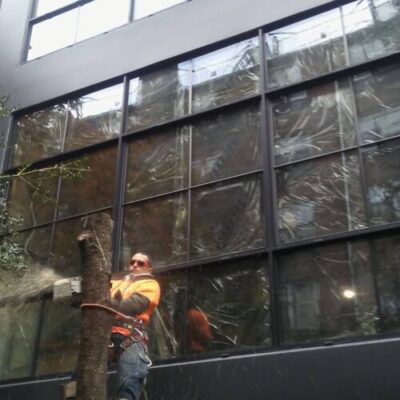Common Symptoms Exhibited by Beech Trees

Beech trees can exhibit symptoms of various diseases, each with its own distinctive signs. Here are some common symptoms of diseases that affect beech trees:
- Beech Bark Disease (BBD):
- Cankers: These are sunken areas or lesions on the bark, often accompanied by a reddish-brown or black discoloration.
- Galls: Swellings or growths on the bark caused by the feeding of the scale insect.
- Dieback: Progressive decline of branches and foliage due to impaired nutrient transport caused by cankers.
- Beech Leaf Disease:
- Leaf Discoloration: Leaves may exhibit dark green bands between veins, chlorosis (yellowing), or browning.
- Leaf Deformation: Leaves may become thickened, distorted, or curl upwards.
- Premature Leaf Drop: Leaves may fall prematurely, leading to reduced canopy density.
- Root Rot Diseases:
- Reduced Vigor: Overall decline in tree health, manifested by stunted growth, sparse foliage, and poor leaf coloration.
- Wilting: Leaves may appear wilted even when soil moisture is adequate.
- Bleeding Cankers: Sometimes visible on the lower trunk or roots, indicating infection and decay.
- Fungal Infections:
- Fruiting Bodies: Mushrooms or conks may appear on the trunk or around the base of the tree.
- Cankers: Similar to those seen in BBD, but may vary depending on the specific fungal pathogen.
- General Symptoms of Stress:
- Thinning Canopy: Gradual loss of leaves and thinning of the crown.
- Stunted Growth: Reduced annual growth increments.
- General Decline: Overall weakened appearance and susceptibility to secondary pests and diseases.
It’s important to note that specific symptoms can vary depending on the disease and its severity. Prompt identification and appropriate management practices, such as pruning affected branches, improving soil drainage, and using fungicides where necessary, can help mitigate the impact of diseases on beech trees.
BBD) is notable. This disease is caused
by a combination of a scale insect (Cryptococcus fagisuga) and a fungal pathogen (Neonectria spp.). The scale insect feeds on the bark, creating openings for the fungal spores to enter, which then causes cankers to form on the tree. These cankers disrupt the flow of nutrients and water, ultimately weakening and sometimes killing the tree if severe.
Aside from beech bark disease, beech trees can also be susceptible to other ailments such as beech leaf disease, caused by an unknown nematode or pathogen, which results in leaf deformation and discoloration. Additionally, beech trees are vulnerable to root rot diseases and various fungal infections that can affect their health.
Proper management practices, including monitoring for early signs of disease, maintaining tree health through appropriate cultural practices, and sometimes using fungicides or other treatments as necessary, can help mitigate the impact of these diseases on beech trees.
